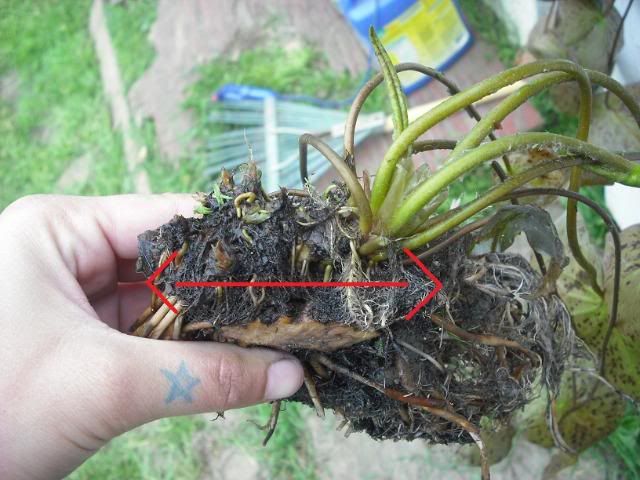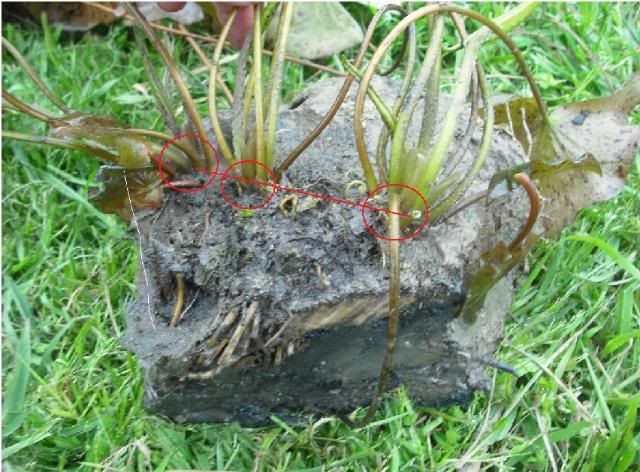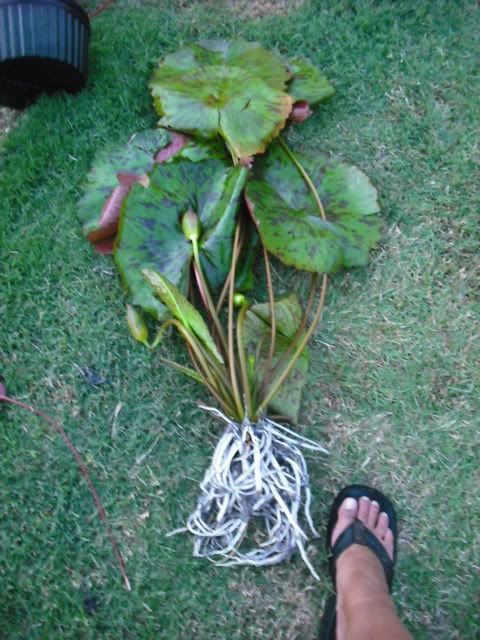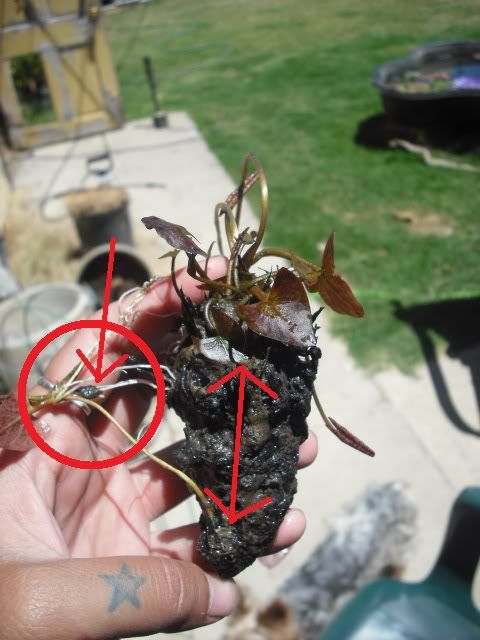Howdy Tugo!
I love pictures to assist explinations, also i posted a growing tuber informative with some tuber pictures in the forum too but the word 'rhizome' in general reference to lilies will be with hardies. except, tropicals do form them as well under great growing conditions.
Hardies as you know have horizontal growth,(shown by the first photo with the arrow, note the growth is vertical but the rhizome is horizontal) which is why you would pot them differently than trops, but the horizontal pinapple growth is what we call the rhizome, and on hardies offshoots grow along the rhizome like eyes, depending on the type of root system, odorata marliac etc... but ive circled where my offshoots have started growing and between the "eyes" on the rhizome is where you cut to divide. tropicals cannot be divided in this manner of dividing a rhizome like a hardy.


tropical growth begins from a crown, and for me; they form tubers as the plant begins to outgrow its pot (needing repotting) or as its overwintered and gone into dormancy, when i pull the pots up in earlier spring to divide and repot i'll find tubers in the pot that the plant has made to ensure its survival so to speak, helps with no fertilizer. I also find them in the middle of the growing season as well, here is a picture similar to ONE plant i pulled to divide,

and these are the plants i got from them

letting the tubers grow themselves out instead of dividing (lazy and it was a huge plant

), i circled where i was able to tell i had smaller tubers beneath the crown because the plants are smaller than the main plant, and this is a tropical.

Here is a picture of a tropical RHIZOME forming. it isnt very big as i have had some about a foot long, they dont have a purpose (this is where the chop and drop comes from in the vic adventure how to's) so you can just break it off of a big main plant, but i includd it here to show the rhizome growth being the same direction as the plant, opposed to a hardy having horizontal rhizome growth.

Here is another tropical rhizome, again not as big, but the top is where the crown is and the lily growth, the rosette of leaves, i left the rhizome because the plant at the crown isnt established, but included the photo to show you a small tropical tuber forming, circled to the left, and you can see the small plant has already seperated itself from the main crown and begun forming a small tuber with a plant growing out. floating this small plant to the side force the tuber to grow into one i can use for propagating.

hope this helps